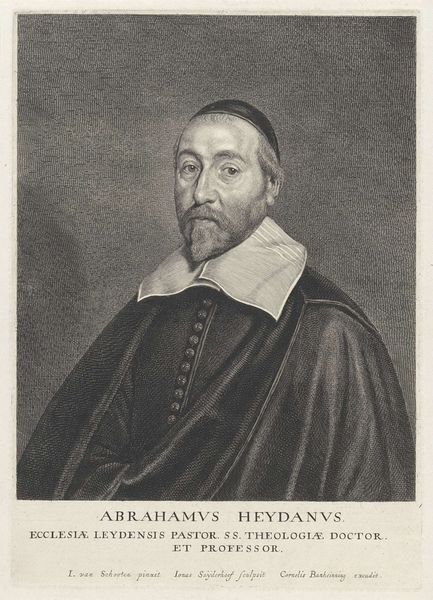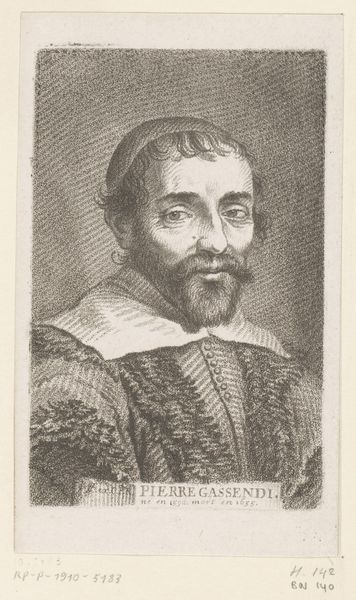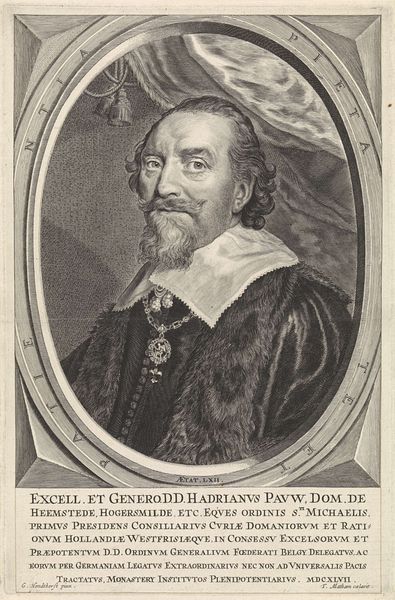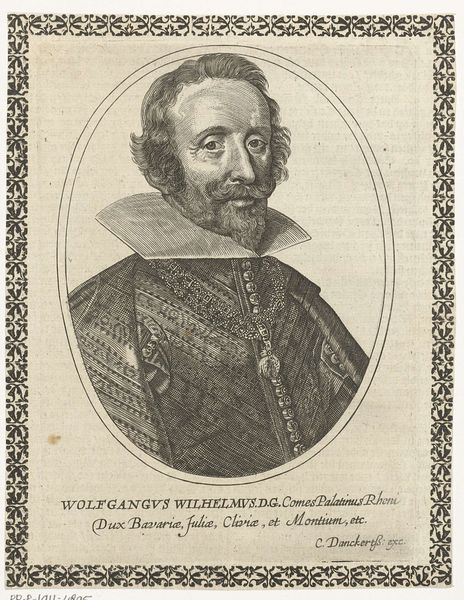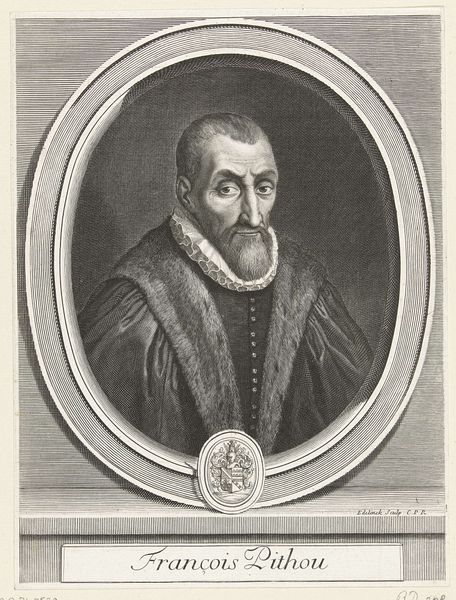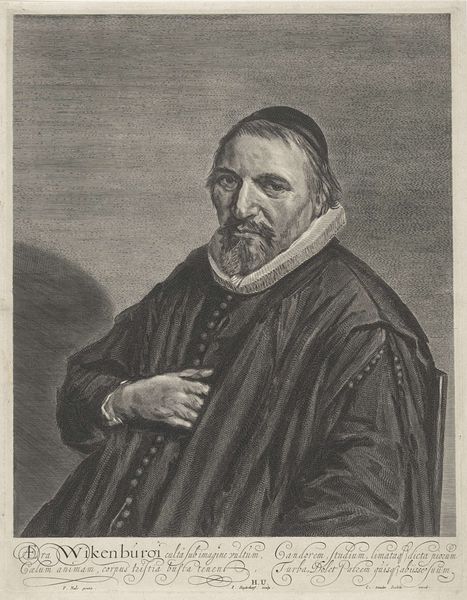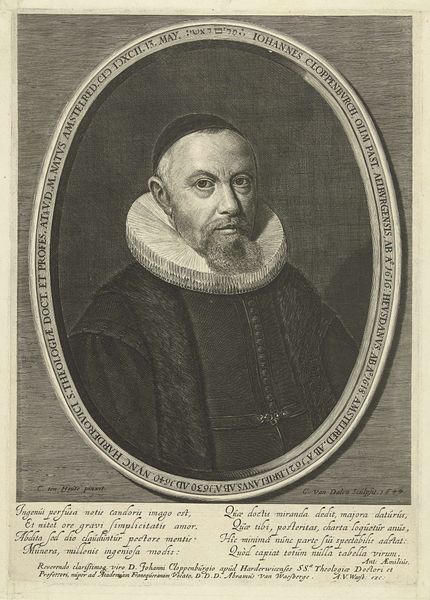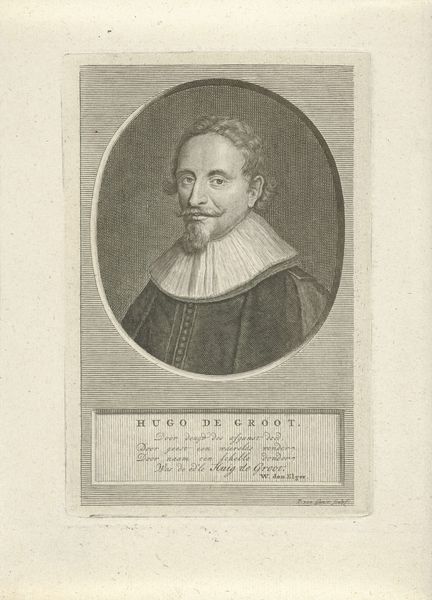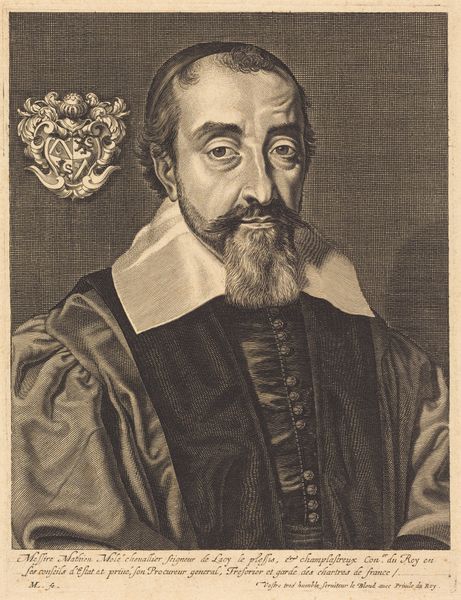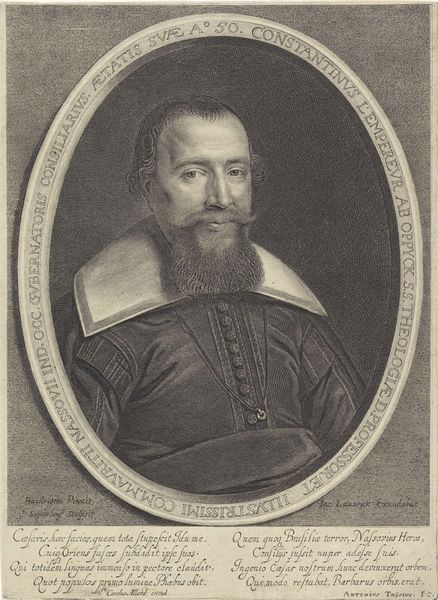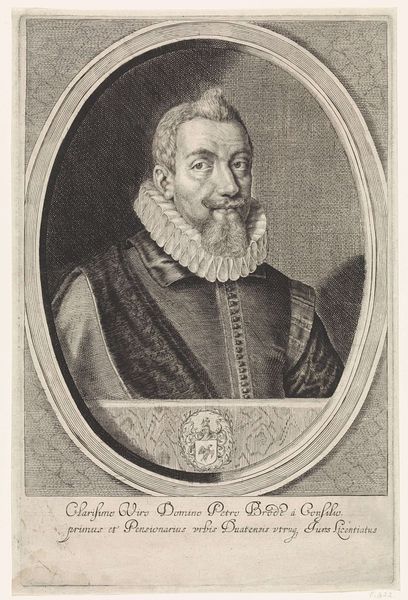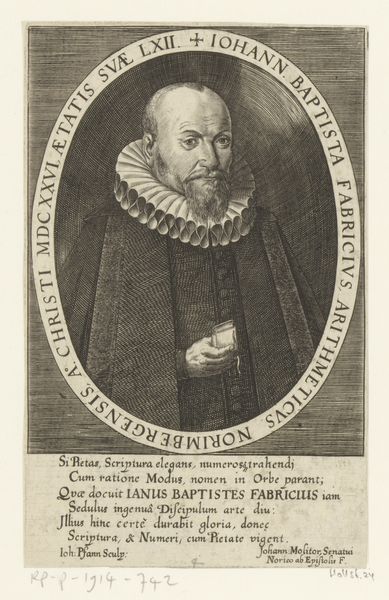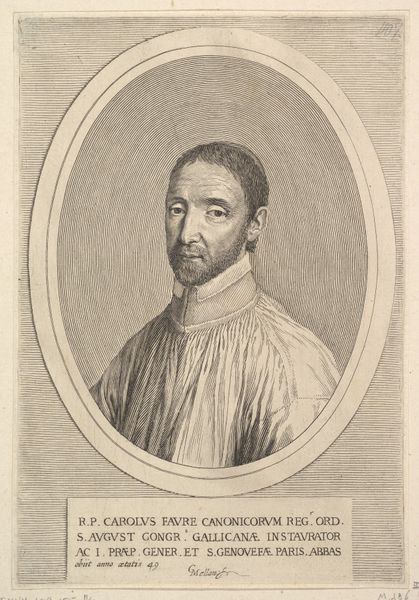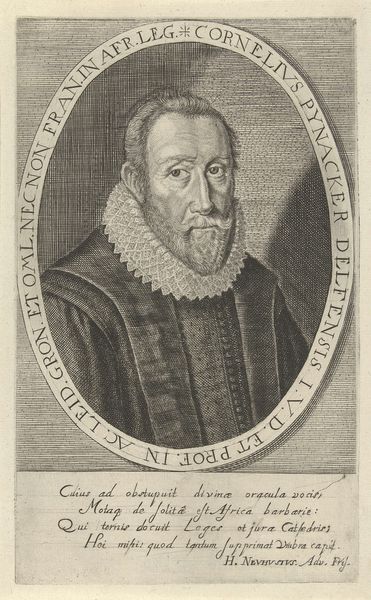
drawing, print, paper, engraving
#
portrait
#
drawing
#
baroque
#
dutch-golden-age
# print
#
figuration
#
paper
#
portrait reference
#
engraving
Dimensions: 323 × 230 mm (plate); 337 × 248 mm (sheet)
Copyright: Public Domain
Editor: So, this is Jonas Suyderhoef's engraving of Abraham Heydan from, it seems, an unknown date. The detail achieved with just lines is astounding. What strikes me most is the controlled intensity in Heydan's gaze. What's your read on this piece? Curator: The portrait is interesting when you consider the context of the Dutch Golden Age. Portraiture, especially engravings like this, served a vital social function. Think of them as early forms of mass media, crucial for constructing public image and projecting authority. This portrait of Heydan, a theologian, served to broadcast his image, and thus, his influence and ideas, to a wider audience. Editor: It's like branding, 17th-century style. So, how would an engraving accomplish that? Curator: The deliberate choices of dress, pose, even the text beneath, were carefully designed to convey Heydan's status and intellect. His formal attire signals his religious and academic standing. What does his expression suggest to you? Editor: You mentioned earlier the "politics of imagery." How did this portrait contribute to the politics of its time? Curator: The Dutch Golden Age was a period of intense intellectual and religious debate. Heydan was likely associated with specific theological positions. A portrait like this wasn't just a likeness; it was a statement of affiliation, aligning him with certain factions and ideologies within the religious and intellectual landscape. Consider it as part of an ongoing visual and textual argument playing out in the public sphere. Editor: So much more than just a picture, it’s an argument in ink! Curator: Precisely! And these prints often circulated widely, influencing public opinion and solidifying reputations. Examining these images through that lens really illuminates their purpose. Editor: I'll never look at an old portrait the same way again! Thanks!
Comments
No comments
Be the first to comment and join the conversation on the ultimate creative platform.
